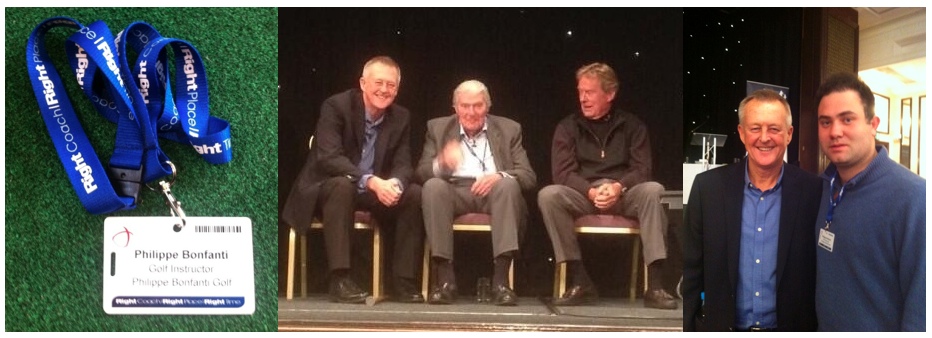Legends
Learning From the Greats
31/10/14 15:13
 I have just returned from a coaching conference where the guest speakers were Martin Hall and Jim Hardy. They both did presentations on the topic of teaching the recreational Golfer. Martin Hall is currently ranked 7th in Golf Digest’s list of the Top 50 instructors in America and presents School of Golf on the Golf Channel. Jim hardy is ranked 8th in Golf Digest’s list of Top instructors in America and currently works with 19 Tour Players. He is perhaps best known for his One Plane and Two Plane swing models.
I have just returned from a coaching conference where the guest speakers were Martin Hall and Jim Hardy. They both did presentations on the topic of teaching the recreational Golfer. Martin Hall is currently ranked 7th in Golf Digest’s list of the Top 50 instructors in America and presents School of Golf on the Golf Channel. Jim hardy is ranked 8th in Golf Digest’s list of Top instructors in America and currently works with 19 Tour Players. He is perhaps best known for his One Plane and Two Plane swing models. Having the chance to listen to the people at the top of our profession is always an honour and I feel there is always something to be learned. Martin Hall emphasised this throughout his talk stating that you should always search for evidence that counters your beliefs and try to entertain hypotheses that are antagonistic to one another. I often say to people that if they do one thing differently following a lesson then it has been worth their while. This certainly applies here and I will try and share with you some of the important messages that I feel were emphasised on the day.
Both of them heavily emphasised the importance of ball contact with Martin stating, “I teach ball contact first” and Jim stating, “the priority is solid contact”. This is the first thing that must be mastered in order to play good golf. A golfer who hits it solid will have much more enjoyment from the game than someone who struggles to make contact. Jim spoke about the fact that in order to achieve this you must control your swing bottom, in other words you must control the the low point of your golf swing. Methods discussed to improve this were to look out for elements in a swing that contribute to a steep angle of hit and elements that contribute to a shallow angle of hit with the aim of balancing them out against one another. One of Martin’s strengths is his ability to “invent” tools to convey his messages. For low point control he uses all manner of contraptions such as ropes, spray paint cans, hammers, sponges and a club with zero loft. I feel this helps tremendously with keeping things informative but also fun.
Emphasis was also placed on the need to help the golfer immediately. I am a strong believer in this and have never understood those who say that you must take a step backwards before you take two steps forwards. It should not take more than 15 minutes or so to change your ball flight during a lesson and if you take a step backwards you are prioritising a change in the wrong piece.
Several times throughout his presentation Martin followed up a point he was making by saying “I don’t know if that’s true, but I know it helps in my teaching”. This is so important because teaching isn’t simply about dispensing information; it is also about building trust and relationships. I have heard my friend Andy Plummer say this many times “the goal isn’t to be the smartest person in the room but to help the most golfers.”
The day was concluded with a question and answer session with the legendary John Jacobs who many of today’s leading instructors look to as a mentor. His passion for the game, even at the age of 88, was overwhelming.
The final thoughts I’m taking home with me are that “if the only tool you have is a hammer, everything looks like a nail” and that “fix” is a positive word. We must all keep learning and improving, “Remind yourself you’ve got to do better at everything you do”.
